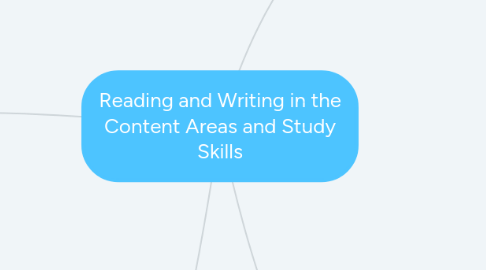
1. Study Skills
1.1. Retention can be aided by understanding how memory works and how depth of processing can affect what we remember.
1.2. overlearning: continuing to study after the material has been learned
1.3. developing conceptual understanding for new information
1.4. rehearsal: repeating information until it has been memorized
1.5. memory devices
1.5.1. mnemonic devices
1.5.2. acronyms
1.5.3. acrostics
1.6. Practice is essential to gain confidence and competence.
1.6.1. Practice sessions should be short and frequent.
1.6.2. Modeling examples of effective practice is useful for students.
1.7. frequent review of material
1.8. SQ3R: study technique used since the 1940s
1.8.1. Survey: look over headings and summaries
1.8.2. Question: ask a question before reading a section
1.8.3. Read
1.8.4. Reciting: verbalize what was just read from memory
1.8.5. Review: short sessions to go over material
1.9. self-enhanced learning: quizzing yourself to evaluate knowledge
1.10. metacognition: thinking about how you think (asking questions, monitoring, etc.)
1.11. Test Taking Strategies
1.11.1. locate and recall: going back to the text to find information
2. Sheltered English
2.1. a way of promoting acquisition of English through content area learning
2.2. Recommendations for ELL students
2.2.1. speak more slowly
2.2.2. use visuals to support mostly verbal presentations
2.2.3. use hands-on activities and graphic organizers
2.2.4. use alternative texts with more simple language
2.2.5. use students native language whenever possible
2.2.6. systematically instruct students in vocabulary
2.2.7. create a sentence wall
3. Content Area Literacy
3.1. challenging because the reading is often more complex and requires greater vocabulary and background knowledge
3.2. Instructional Techniques
3.2.1. developing conceptual understanding: seeking to identify and understand essential questions of a text by using various learning strategies and making text connections
3.2.2. BEFORE READING: activate prior knowledge, make predictions, set goals for reading, and decide on a reading strategy
3.2.2.1. anticipation guides are useful for students who already are somewhat familiar with the topic
3.2.3. DURING READING: Students should be actively attempting to construct meaning as they read.
3.2.3.1. think alouds should be modeled by the teacher and emphasized as a silent reading strategy
3.2.3.2. observing text features that enhance comprehension (questions, summaries, overviews, and "typographical aids"
3.2.3.3. strategy guides (similar to a study guide) can be developed to help students organize their thoughts as they read
3.2.4. AFTER READING: Students should reflect on what they have read and assimilate the new information with what they already know.
3.2.4.1. Graphic organizers (webs, diagrams, semantic maps, Venn diagrams, etc.) are useful for making information easy to visualize.
3.3. E-books are a good option for struggling readers or students with disabilities.
3.4. Language experience writings can be useful for students who do not yet have the skills to read textbooks or trade books.
3.5. Students should have experience reading periodicals as well as
3.6. Most content area-texts (textbooks) provide support for readers.
3.6.1. Instruction needs to be differentiated for students because textbooks are generally written for the average/on-level reader.
3.6.1.1. STRUGGLING READERS: audio version of the text, extra assistance with text, group reading and summarizing, trade books
3.6.1.2. ADVANCED READERS: more complex post-reading tasks, enrichment research
